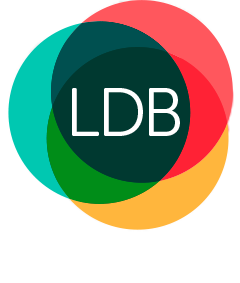The changing company tax rate and what it means for a Small Business Entity (SBE)
June 18, 2018

The federal government has recently enacted changes to the company tax rate to reduce the tax rate over a number of years.
The first of these reductions took effect from 1 July 2016 with the company tax rate being reduced to 27.5 per cent for companies that operate a business with a turnover of less than $10 million.
A company that meets this criteria is known as a Small Business Entity (SBE) for taxation purposes.
In addition to the company tax reduction, an SBE is also entitled to access concessions in relation to a variety of areas including accelerated depreciation, capital gains tax, and goods and services tax.
The reduction in the company tax rate has also made changes to the rate at which an SBE can frank a dividend.
Depreciation concessions
An SBE has the ability to claim an upfront deduction for assets costing less than $20,000 for income tax purposes.
This applies for each asset the business purchases under the $20,000 limit. There are also no restrictions as to whether the asset is new or second-hand.
At present, this concession is only available until 30 June 2019. After this date, it is expected that the threshold will reduce to $1,000.
An SBE is also able to use a small business asset pool.
This pool combines the various fixed assets for taxation purposes and allows the business to claim depreciation at a flat rate of 15 per cent in the year the asset is acquired and 30 per cent in subsequent years.
This can potentially ease record keeping difficulties and may result in a higher depreciation claim for the business.
Capital Gains Tax (CGT)
The classification of a company as an SBE may allow it to access generous concessions in relation capital gains tax (CGT).
Typically, these concessions become important to an SBE when they seek to restructure, sell their business or sell significant business assets.
They operate by reducing the capital gain from such a transaction and can result in no tax being payable in certain circumstances.
It should be noted however, that the criteria to access these concessions is stricter than the $10 million threshold.
To access these concessions, an SBE needs to have a turnover of less than $2 million or satisfy the $6 million net asset value test.
Goods and Services Tax (GST)
An SBE also has reduced reporting requirements in relation to their business activity statement (BAS) which can assist with their cashflow.
There are only three categories that need to be reported on a BAS for an SBE: total sales, GST on sales and GST on purchases.
This can be contrasted against the reporting requirements for other companies that also need to report export sales, GST free sales, capital purchases and non-capital purchases.
Additionally, an SBE can also elect to account and remit for GST on a cash basis.
This means that if an SBE has not yet received payment from its debtors, it does not need to report and remit GST on these invoices.
It can wait until the payment is received until the GST is passed onto the ATO.
This principle also holds true when an SBE needs to pay it creditors. The relevant GST credits should only be claimed upon payment.
Is my company a Small Business Entity (SBE)?
The classification of a company as an SBE has two components: turnover and carrying on a business.
The turnover test means that a company (including its connected entities and affiliates) should have a turnover of less than $10 million for the 2017 financial year.
Whilst the turnover test is relatively clear cut, the definition of carrying on a business is slightly more open to interpretation as it will always depend on the facts of each case.
In general, the following factors need to be considered to determine whether a company carries on a business:
- Commercial character of the business
- Profitability (including prospect of future profits)
- Regularity of the activity carried on
- Organisation and planning involved in the activity
- Size, scale and permanency of the activity.
A company that can show it has satisfied the above criteria consistent with the characteristics of business will be classified as carrying on a business for taxation purposes.
Companies that are not an SBE
A company that is not an SBE would still be subject to the higher company tax rate of 30 per cent.
Additionally, a company that is not an SBE does not receive any other benefits of being a small business entity, such as the depreciation concessions and GST concessions described above.
Rule changes on 1 July 2017 and 1 July 2018
The ever-changing tax landscape saw the turnover threshold increase from $10 million for the 2016-17 financial year to $25 million from 1 July 2017. It will increase again to $50 million from 1 July 2018. These increased turnover thresholds are only applicable for the company tax rate reduction and not for depreciation or any other concessions.
While the federal government is pursuing other changes to company tax, at present these have not been legislated.
Need help navigating the changes?
If you would like help with understanding the impact of these changes on your circumstances, please do not hesitate to contact your LDB adviser by phoning (03) 9875 2900.
Alternatively, send us a note via the contact form below.
